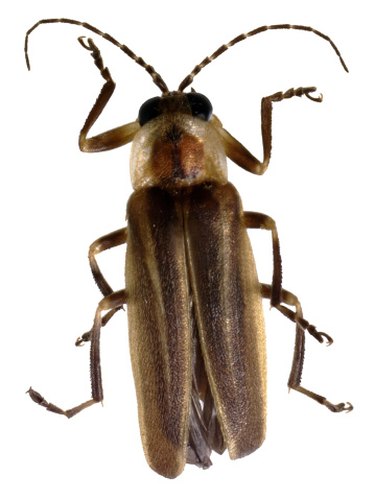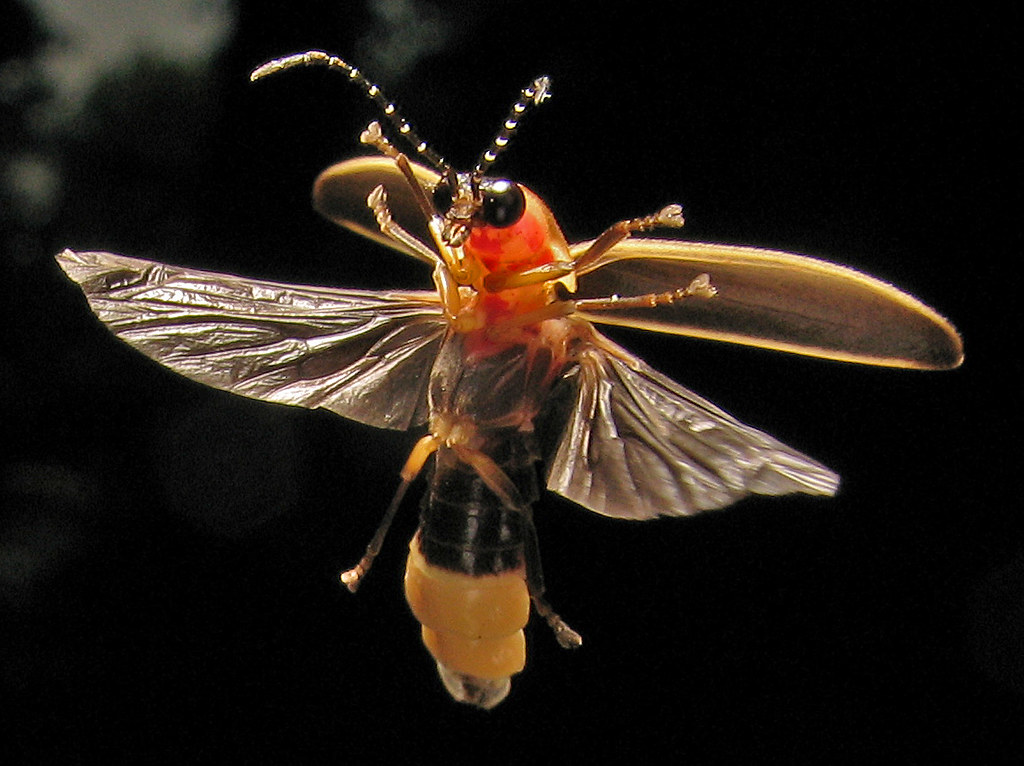

Īdult diet varies among firefly species: some are predatory, while others feed on plant pollen or nectar. The larvae pupate for one to two and a half weeks and emerge as adults. The larval stage lasts from several weeks up to, in certain species, two or more years. Some are so specialized that they have grooved mandibles that deliver digestive fluids directly to their prey. The larvae of most species are specialized predators and feed on other larvae, terrestrial snails, and slugs. At least one species, Ellychnia corrusca, overwinters as an adult. Some do this by burrowing underground, while others find places on or under the bark of trees. The larvae feed until the end of the summer. In certain firefly species with aquatic larvae, such as Aquatica leii, the female oviposits on emergent portions of aquatic plants, and the larvae descend into the water after hatching. The eggs hatch three to four weeks later. A few days after mating, a female lays her fertilized eggs on or just below the surface of the ground.

Unlike actual larvae, she has compound eyes.įireflies are beetles and in many aspects resemble other beetles at all stages of their life cycle, undergoing complete metamorphosis. Fireflies have attracted human attention since classical antiquity their presence has been taken to signify a wide variety of conditions in different cultures and is especially appreciated aesthetically in Japan, where parks are set aside for this specific purpose.īiology A larviform female with light-emitting organs on her abdomen. While all known fireflies glow as larvae, only some species produce light in their adult stage, and the location of the light organ varies among species and between sexes of the same species. Many live in marshes or in wet, wooded areas where their larvae have abundant sources of food. In a further development, female fireflies of the genus Photuris mimic the flash pattern of Photinus species to trap their males as prey.įireflies are found in temperate and tropical climates. Light production in the Lampyridae is thought to have originated as an honest warning signal that the larvae were distasteful this was co-opted in evolution as a mating signal in the adults. They are soft-bodied beetles commonly called fireflies, lightning bugs, or glowworms for their conspicuous production of light, mainly during twilight, to attract mates. The Lampyridae are a family of elateroid beetles with more than 2,000 described species, many of which are light-emitting. Fireflies pose no danger to humans.Araucariocladus Silveira and Mermudes, 2017 This is because they eat many types of pests, including different types of worms, slugs, and snails that may be damaging your plants. Are Fireflies Bad For My Yard?įireflies have proven to be very beneficial for many gardens.
LIGHTNING BUGS EAT FULL
The pupae stage only lasts one and a half to two weeks, after which the fireflies will become full adults. Firefly eggs are laid on top of or beneath the surface of the ground, where the larvae will hibernate until the spring. However, this toxic chemical does not phase the photuris firefly species that are known to prey on other fireflies.įireflies undergo each of the common stages of development egg, larvae, pupae, and adult. When attacked by prey, fireflies release a drop of blood with toxic chemicals.

How Do Fireflies Survive?Ī firefly’s diet contains worms, snails, and sometimes other fireflies. This light sends signals to a potential mate and warns off potential predators. These bugs contain bioluminescent organs located under their abdomen that produce a chemical reaction, allowing them to illuminate. Did you know that fireflies, or lightning bugs, are actually a type of beetle? Fireflies are a type of soft-bodied beetle, commonly recognized for their bright presence during the nighttime.


 0 kommentar(er)
0 kommentar(er)
